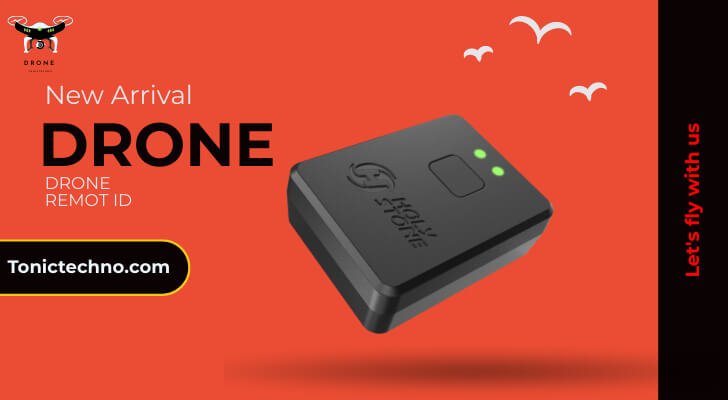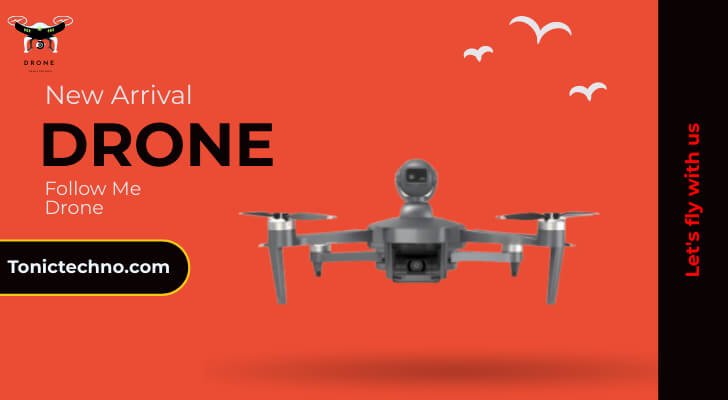Safety and compliance have become critical concerns in the ever-growing world of drones. One of the most essential innovations designed to improve these aspects is the Drone Remote ID. This technology transforms how drones communicate with the authorities, air traffic control, and other drones. This article will explore what Drone Remote ID is, how it works, and why every drone operator must understand it. Whether you’re a drone enthusiast, operator, or manufacturer, understanding Remote ID is vital to staying safe and compliant with the rules.

What is a Drone Remote ID?
Drone Remote ID is a system that allows drones to transmit their identity and location to nearby receivers, such as air traffic controllers and law enforcement authorities. This technology resembles how aeroplanes communicate their identity and location to air traffic control. The key goal is to enhance safety by allowing authorities to monitor drones operating in the airspace. Remote ID broadcasts a unique identifier and essential flight information, such as location, altitude, and speed. This broadcast can be detected by other drones, authorities, and even individuals with the necessary equipment to receive it. The system also allows for real-time tracking, which can prevent accidents and ensure that drones operate legally.
How Does Drone Remote ID Improve Safety?
One of the primary purposes of Drone Remote ID is to improve airspace safety. By enabling real-time tracking and identification, it allows air traffic controllers and law enforcement to monitor drone activity. This helps prevent collisions between drones and other aircraft, especially in crowded airspaces near airports or populated areas. Furthermore, Remote ID provides a way to trace drones in case of accidents or safety violations. Law enforcement can use Remote ID data in emergencies to locate the operator and respond accordingly. This dramatically reduces the chances of a drone causing harm or being involved in an illegal activity.
Additionally, Drone Remote ID contributes to the security of the drone community by helping to prevent dangerous behaviour, such as flying in restricted zones or near airports. It provides a way for authorities to identify rule-breaking drones and take action.
FAA Remote ID Regulations
In the United States, the Federal Aviation Administration (FAA) has introduced regulations to mandate the use of Remote ID on drones. These regulations are part of integrating drones into the national airspace system safely and efficiently. The FAA’s Remote ID rule requires all drones operated in controlled airspace to broadcast their identification, location, and other flight data. These drones must use either a direct broadcast or an internet-based system to transmit Drone Remote ID information. The rules also cover manufacturers, who must design drones with Remote ID capabilities. The FAA has set specific deadlines for manufacturers and operators to comply with these new regulations.
Drone operators must ensure that their equipment meets the required standards. Drones without Remote ID will eventually be grounded or banned from flying. This regulation aims to improve safety, allow for better airspace management, and ensure public confidence in drone technology.
How Remote ID Works with Drones
Remote ID is implemented through a communication system that allows drones to transmit essential data. The data includes the drone’s unique identification number, location, altitude, speed, and the operator’s location (for some models). There are two types of Remote ID systems: broadcast and network-based.
- Broadcast Remote ID: This method involves drones transmitting their information directly to receivers in the surrounding area. Other drones, mobile apps, and authorities within range can pick up on this information.
- Network-based Remote ID: This method allows drones to transmit their data through the Internet to a remote server, which relays the information to authorized receivers such as air traffic control.
Both systems aim to enhance situational awareness by allowing others to see where drones fly and ensuring they operate within legal parameters.
Compliance and Legal Implications of Remote ID
Failure to comply with Remote ID regulations can have significant legal implications for drone operators. The FAA enforces these rules in the United States, and non-compliant drones may be subject to fines or other penalties. Drone operators must ensure their drones are equipped with Remote ID technology by the deadlines. Drones not meeting the requirements will be restricted from flying in regulated airspace. Other countries may adopt similar Remote ID regulations internationally. Drone operators should stay informed about local laws and regulations to avoid legal issues. Additionally, certain zones, such as airports and military areas, may have stricter compliance requirements.
Challenges in Implementing Remote ID
Although Drone Remote ID offers many benefits, its implementation presents challenges. One of the primary concerns is the cost of upgrading existing drones. Drones manufactured before the introduction of Remote ID will need to be retrofitted with compatible systems, which can be expensive. There are also concerns about data privacy. Some worry that broadcasting their location and other details could compromise personal privacy. However, the FAA stated that the data transmitted through Remote ID is not linked to the operator’s identity and is only shared with authorized parties.
Another challenge is the technical complexity of integrating Remote ID systems into drones. Drone manufacturers must design drones capable of broadcasting or transmitting the required information, which may involve changes to the drone’s hardware or software.
Tips for Drone Operators to Ensure Compliance
To ensure compliance with Remote ID regulations, drone operators should follow these tips:
- Check for Remote ID Compatibility: Ensure your drone has the necessary technology. Many new drones are now being released with this feature.
- Upgrade Your Drone: If your drone does not have a Remote ID, you may need to upgrade it with a compatible system. Some drone manufacturers offer retrofit kits.
- Stay Updated on Regulations: Monitor the FAA’s deadlines and updates regarding Remote ID regulations to ensure compliance.
- Use Approved Apps and Devices: For situational awareness, use apps and devices that can receive and display Remote ID information.
- Fly in Legal Airspace: Always ensure you are flying in approved airspace. Remote ID helps authorities monitor illegal flights, and operating in restricted areas can lead to penalties.
Future of Drone Remote ID
As drone technology advances, so will Remote ID systems. In the future, we expect to see even more advanced identification systems, which include more precise location tracking, higher data security, and better integration with other airspace management systems. Remote ID will likely play a significant role in the growing field of autonomous drones, where multiple drones will operate simultaneously in the same airspace without human control. The continued development of Remote ID systems will be essential to maintaining safety in these increasingly busy airspaces.
FAQ
What is a Drone Remote ID?
Drone Remote ID is a system that broadcasts a drone’s identification and location to authorities and other drones for safety and compliance.
Why is Drone Remote ID critical?
Remote ID enhances airspace safety by allowing authorities to monitor drone activities, prevent accidents, and improve aviation regulation compliance.
When will Remote ID regulations take effect?
The FAA has set compliance deadlines, with some regulations taking effect as early as 2023. Operators should ensure their drones meet these requirements.
Can I fly my drone without a Remote ID?
No, drones that do not comply with Remote ID regulations will not be permitted to fly in controlled airspace after the FAA’s deadline.
How can I make my drone compliant with Remote ID?
Check if your drone has Remote ID capabilities. If not, upgrade it with a retrofit kit or purchase a new drone that supports Remote ID.
Conclusion
Drone Remote ID is a critical technology that enhances safety, compliance, and security in the growing drone industry. It improves airspace management and helps prevent accidents by enabling real-time tracking and identification of drones. As regulations evolve, drone operators must stay informed and be equipped with the required technology. The future of drones relies on secure and compliant airspace, and Remote ID plays a crucial role in making that possible.

